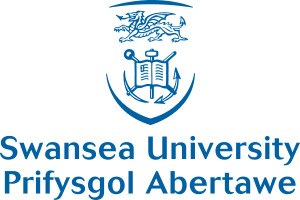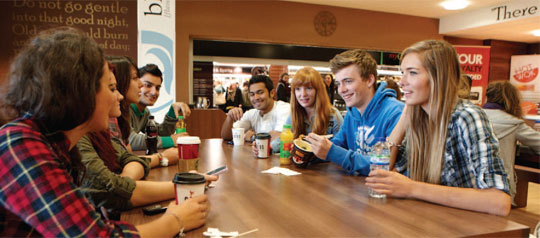Swansea University:
Swansea University (Welsh: Prifysgol Abertawe) is a public research university located in Swansea, Wales, United Kingdom. Swansea University was chartered as University College of Swansea in 1920, as the fourth college of the University of Wales. In 1996, it changed its name to the University of Wales Swansea following structural changes within the University of Wales. The new title of Swansea University was formally adopted on 1 September 2007 when the University of Wales became a non-membership confederal institution and the former members became universities in their own right.
It is the third largest university in Wales in terms of number of students. The university campus is located next to the coast at the north of Swansea Bay, east of the Gower Peninsula, in the grounds of Singleton Park, just outside Swansea city centre. Swansea was granted its own degree-awarding powers in 2005 in preparation for possible changes within the University of Wales.
Swansea and Cardiff University compete in an annual varsity match, known as the Welsh version of the Oxbridge event, which includes the Welsh Varsity rugby and The Welsh Boat Race.
Organisation and administration
Governance
Swansea received its royal charter in 1920 and like many universities is governed by its constitution that is set out in its statutes and charter. The governing body of Swansea University is its Council, which, in turn, is supported by the Senate and the Court.
- The Council consists of 29 members including the Chancellor, Pro-chancellors, Vice-chancellor, Treasurer, Pro-vice-chancellors, staff and student members, city council representation and a majority of lay members. The council is responsible for all of the University’s activities and has a well-developed committee structure to help discharge its powers and duties.
- The Senate consists of 200 members, the majority of whom are academics but includes also representatives from both the Students’ Union and the Athletic Union. The senate is chaired by the Vice-Chancellor, who is the head of the university both academically and administratively. The senate is the main academic body of the university and is responsible for teaching and research.
- The Court consists of over 300 members, who represent the stakeholders in the university and stretch from local to national institutions. The court meets annually to discuss the university’s annual report and its financial statements, as well as to discuss current issues in higher education
Colleges
Swansea University’s academic departments are organised into 6 colleges:
The College of Arts and Humanities
American Studies, Ancient History, Applied Linguistics, Classics, Cymraeg/Welsh, Egyptology, English, English Literature, French, German, History, Italian, Medieval Studies, Media Studies (with Film and PR options), Politics & International Relations, PPE, Spanish-Hispanic Studies, Translation, War and Society
The School of Management
Accounting, Banking, Business Management, Economics, Entrepreneurship, Finance, Information Systems, Marketing
The School of Law
International Maritime, Trade and Commercial Law, Business & Law. Legal Practice Course, Graduate Diploma in Law, IISTL, CEELP, LLB
The College of Engineering
Aerospace, Chemical and Biological, Civil, Electrical and Electronic, Environmental, Information, Communication & Computing Technology, Materials, Mechanical, Medical, Product Design, Engineering & Technology, Sport & Exercise Science
The College of Human and Health Science
Audiology, Applied Social Sciences, Cancer Care, Childhood Studies, Clinical Physiology, Midwifery, Medical Sciences & Humanities, Nursing (Adult, Child, Mental), Osteopathy, Paramedic Science, Pre-Hospital Care, Psychology, Public Health and Health Promotion, Radiography
The College of Medicine
Graduate Entry Medicine (4-year programme), Centre for Health Information, Biochemistry, Genetics, Institute of Life Sciences 1 & 2, BioMedical Research
The College of Science
Biological Sciences, Computer Science, Geography, Mathematics and Physics.
The University also provides Welsh medium courses delivered by Academi Hywel Teifi, named after Hywel Teifi Edwards, which offers subjects across all colleges.
Campus
The majority of university buildings are on the Singleton Campus, based in the grounds of Singleton Park, adjacent to Swansea Bay. The campus also includes the nearby Sports Village and Hendrefoelan Student Village, about 2.5 miles away.
Library
In 2011, the university’s Library & Information Services and Administrative Computing Unit merged to form Information Services and Systems. ISS provides a combined library, IT and careers service. The main Library & Information Centre on the Singleton campus has over 800,000 books and periodicals, along with access to a wide range of electronic resources including over 23,000 electronic journals. There are over 1,000 study spaces, almost half of which are equipped with networked PCs. LIS was awarded the Charter Mark in 2006, and received the new Customer Service Excellence award in 2009. In 2013 it received a renewed Customer Service Excellence award in combination with the university’s Registry and Student Services.
The Library & Information Centre also has major archive collections, based on the South Wales Coalfield Collection, several papers of Welsh writers in English and the Richard Burton Collection, which was recently donated by Burton’s wife, Sally. It is hoped that the collection will form the hub of a learning resource dedicated to the actor’s life and work.
Recent developments include a major extension in opening hours, the transfer of the stock of the Morriston Hospital Nursing Library to the Library and Information Centre and the creation of the Richard Burton Archives which house his personal possessions as well as the South Wales Coalfield Collection .[citation needed]
Sports Village
Swansea University’s sports centre[11] is located near the Singleton Park campus on the western side of Sketty Lane. The university sports centre is separate to the adjacent King Edward V Playing fields to the west. The sports centre is used by the university for its sports degree courses as well for general student recreation. Facilities include an indoor 6-lane running track, gymnasium, sports hall, tennis courts, squash courts and a climbing wall. Outdoor facilities include an 8-lane running track and floodlit playing fields including rugby, football, lacrosse and cricket pitches.[12][13] During the 2012 Olympics, the University hosted the training camps for the Mexican and New Zealand Paralympic teams and the Ireland Triathlon team.
Wales National Pool / Pwll Cenedlaethol Cymru
The Wales National Pool in the Sketty area of Swansea, Wales, is a 50 metre swimming pool built to FINA standards. The facility, which also has a 25m × 9.5m training pool and 1,200 spectator seats, is used to train Wales’ world class aquatic sports athletes and houses the headquarters of the Wales Amateur Swimming Association.
The pool is one of five of British Swimming’s Intensive Training Centres (ITC), used to train swimmers for the London 2012 Olympics. The facility was built with funding from Sport Wales, Swansea Council and Swansea University and is built on the site of the university’s sports centre.
360- Beach and Water Sports Centre
The 360 Beach and Water Sports Centre is a not for profit company set up by Swansea University and is located on the foreshore in front of the University’s Singleton Park. It offers a range of sports, activities and training such as kite surfing, paddle boarding, kayaking, beach volleyball and a beach side bistro to the local community, students, enthusiasts and visiting tourists. The centre cost £1.4 million and was opened in Autumn 2012.
Museum of Egyptian Antiquities (Egypt Centre)
Located within the Taliesin building, the Egypt Centre is a museum of Egyptian antiquities open to the public. There are over 4000 items in the collection.[16] Most of them were collected by the pharmacist Sir Henry Wellcome. Others came to the university from: the British Museum; the Royal Edinburgh Museum; National Museums and Galleries of Wales Cardiff; the Royal Albert Museum and Art Gallery and also private donors.
Egypt Centre staff regularly give lectures and talks to museum groups and other outside bodies on widening participation in university museums; social inclusion and volunteering. Schools regularly visit us to take part in a stimulating and interactive programme of events.

